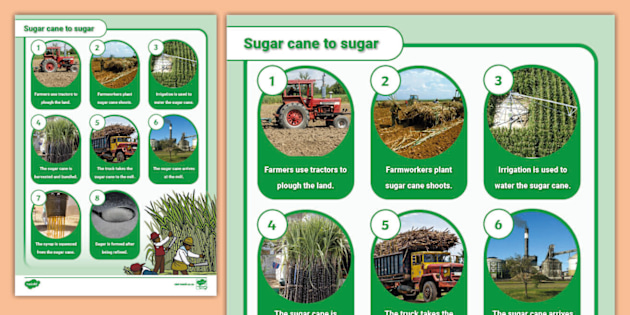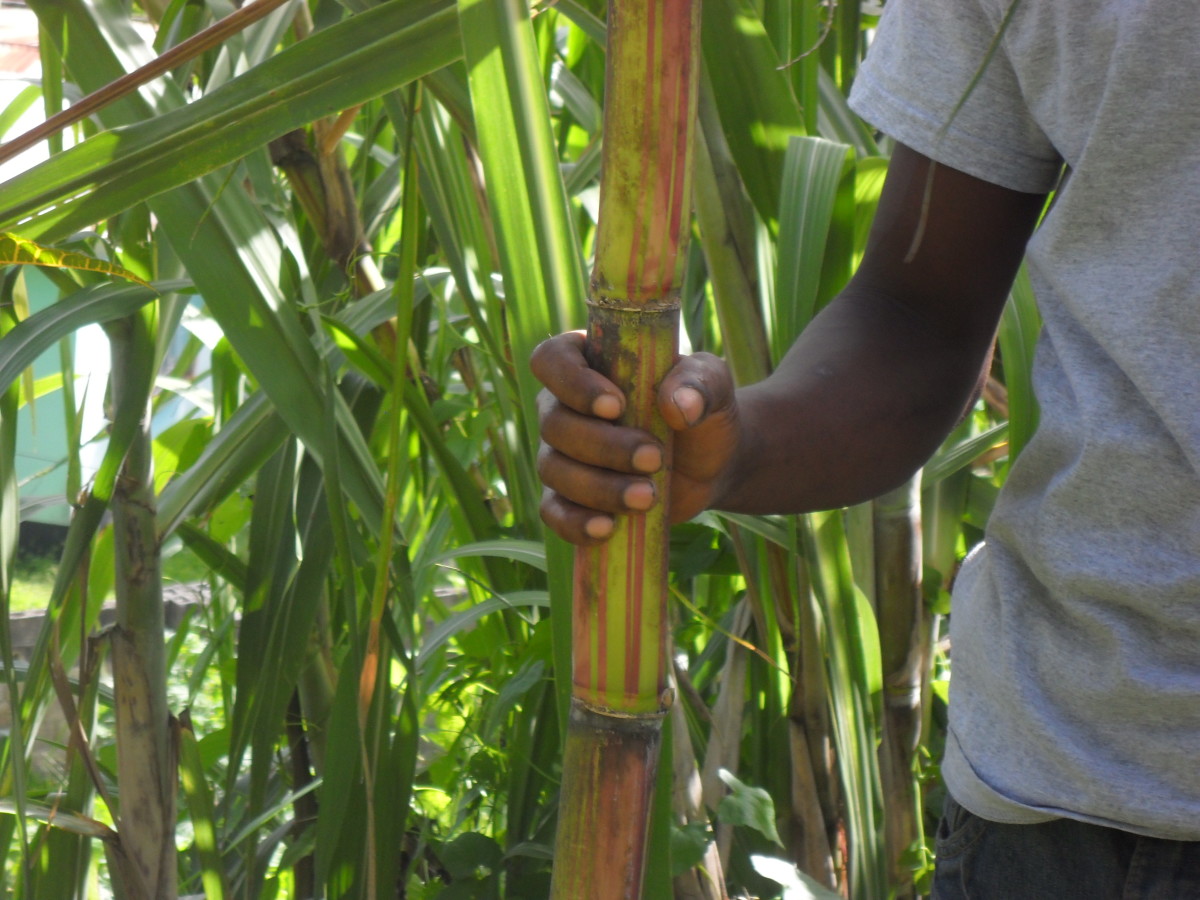The Science Behind What Are Sugar Canes Used For in Ethanol Production
Discovering the Full Line of Process Chemicals: What Are Sugar Canes Utilized For in Production?
Sugar walking sticks play an essential role in different manufacturing procedures, working as a versatile basic material. Their high sucrose material makes them vital in the food market, while technologies in biofuels and naturally degradable plastics highlight their prospective beyond standard usages. In addition, sugar cane extracts are acquiring acknowledgment in drugs and nutraceuticals for their wellness advantages. The diverse applications of sugar canes raise interesting questions about their future in commercial markets. What chances lie ahead?

The Trip of Sugar Walking Cane: From Field to Factory
As the sunlight rises over large fields, the journey of sugar walking cane starts, marked by careful farming and harvesting processes. Farmers pick ideal selections, making sure durable development in suitable climates. Routine watering and nutrient management are necessary, advertising healthy stalks rich in sucrose. When fully grown, the walking stick is gathered, often utilizing mechanical cutters that effectively gather the stalks.Once gathered, the sugar cane is moved to refining centers where it undergoes washing and crushing to draw out juice. This juice is after that made clear, getting rid of impurities through sedimentation and filtration. The clear fluid is concentrated by evaporation, and ultimately crystallized to generate raw sugar.Throughout this journey, quality control is extremely important, ensuring that the end product satisfies market requirements. The makeover of sugar walking stick into raw sugar highlights an intricate interaction of farming and manufacturing, setting the stage for its varied applications in various markets.
Biofuels: Harnessing Energy From Sugar Walking Cane
A substantial part of the world's biofuel manufacturing is originated from sugar walking cane, which serves as a renewable resource resource. This versatile crop is mainly processed to remove sucrose, which can be fermented to produce ethanol. Ethanol originated from sugar cane is not just a clean-burning fuel choice however also adds to lowering greenhouse gas emissions contrasted to typical fossil fuels. In nations like Brazil, sugar cane biofuel has ended up being a substantial component of the energy matrix, powering automobiles and lowering dependence on imported oil. The cultivation of sugar walking stick for biofuels also supports country economies, supplying jobs in farming and handling. In addition, the byproducts of sugar walking cane processing, such as bagasse, are made use of in energy generation, additional improving the sustainability of the production cycle. On the whole, sugar walking cane biofuels stand for a promising method for attaining power freedom while fostering ecological stewardship.
Eco-friendly Plastics: The Sustainable Service
Suppose the solution to the international plastic situation hinges on naturally degradable options? Eco-friendly plastics, originated from renewable energies such as sugar canes, provide a cutting-edge technique to decreasing plastic waste. Unlike traditional plastics, which can take centuries to decompose, these environmentally friendly products damage down naturally, lessening environmental impact.The manufacturing of eco-friendly plastics involves making use of sugars from sugar walking sticks to develop polylactic acid (PLA) and various other biopolymers. These products keep similar functionality to standard plastics, making them suitable for numerous applications, including product packaging, tools, and farming films.As customers and markets change towards sustainability, naturally degradable plastics use an engaging option. They not just minimize dependence on fossil fuels but additionally support a round economic climate by returning to the planet without leaving damaging residues. The raising demand for such materials signifies a significant action towards attending to journalism requirement for more lasting production services when faced with ecological obstacles.
Sugar Walking Cane Removes in Pharmaceuticals and Nutraceuticals

The Future of Sugar Cane in Industrial Applications
As sectors continue to seek lasting and sustainable sources, sugar walking stick is positioned to play an essential duty in numerous commercial applications past its traditional use in sugar manufacturing. Its biomass supplies a sustainable source for biofuels, minimizing dependence on nonrenewable fuel sources and adding to reduced carbon emissions. Furthermore, sugar cane's byproducts, such as bagasse and molasses, are being checked out for their potential in bioplastics and eco-friendly products, resolving the expanding demand for eco-friendly packaging solutions.Research is additionally underway to improve the performance of sugar cane derivatives in numerous markets, including textiles, cosmetics, and building and construction. By harnessing the special buildings of sugar walking cane, makers can create innovative items that straighten with customer choices for sustainability. As technology advancements, the adaptability of sugar walking cane will likely expand, solidifying its position as a principal in the shift toward a more sustainable commercial landscape.

Regularly Asked Concerns
What Is the Process of Refining Sugar Walking Stick Into Sugar?
The process of refining sugar cane into sugar involves harvesting, squashing to draw out juice, clearing up the juice, evaporating water, taking shape sugar, and ultimately drying and packaging the refined item for distribution and consumption. (What Are Sugar Canes Used For)
How Does Sugar Walking Stick Effect Resident Economies?
Sugar walking cane substantially affects local economic situations by creating work, boosting agricultural manufacturing, and creating income with exports. Its farming sustains neighborhood businesses and tiny look what i found farmers, cultivating area development and improving general financial stability in sugar-producing areas.
Are There Any Environmental Concerns With Sugar Walking Stick Farming?
Environmental problems linked with sugar walking stick farming include deforestation, soil destruction, water use, and pesticide drainage (What Are Sugar Canes Used For). These issues effect local communities and add to climate modification, triggering phone calls for more lasting agricultural practices within the industry
What Are the Nutritional Benefits of Sugar Walking Cane?
The dietary advantages of sugar walking stick include its rich material of vitamins, minerals, and anti-oxidants. It offers natural power, supports hydration, and may assist digestion, adding positively to total health when eaten in moderation.
How Does Sugar Cane Compare to Other Crops in Sustainability?
Sugar walking cane shows greater sustainability contrasted to numerous plants due to its reliable use land and water resources, ability to create biofuels, and possibility for carbon sequestration, contributing favorably to ecological health and agricultural practices. When mature, the walking stick is harvested, often making use of mechanical cutters that efficiently gather the stalks.Once accumulated, the sugar cane is moved to refining facilities where it goes through cleaning and grating to remove juice. Unlike traditional plastics, which can take centuries to decay, these eco-friendly products damage down naturally, lessening ecological impact.The manufacturing of eco-friendly plastics involves utilizing sugars from sugar walking canes to produce polylactic acid (PLA) and other biopolymers. Often recognized for their duty in sugar manufacturing, sugar walking cane essences are significantly discovering applications in the pharmaceutical and nutraceutical markets. As markets continue to look for sustainable and sustainable resources, sugar walking stick is positioned to play an essential role in various commercial applications beyond its conventional usage in sugar manufacturing. Furthermore, sugar cane's byproducts, such as bagasse and molasses, are being checked out for their possibility in bioplastics and biodegradable materials, attending to the growing demand for eco friendly product packaging solutions.Research is likewise underway to improve the efficiency of sugar walking cane derivatives in numerous industries, consisting of textiles, cosmetics, and construction.